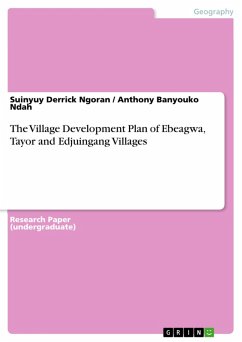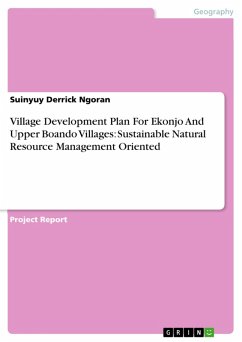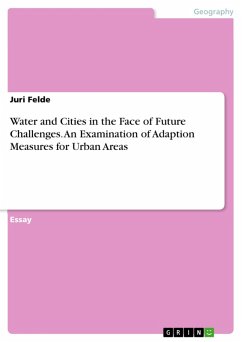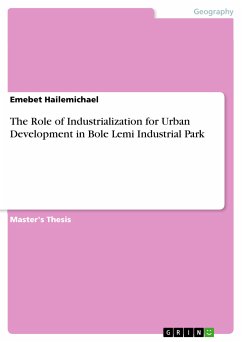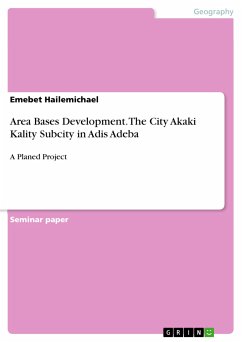Research Paper (undergraduate) from the year 2009 in the subject Geography / Earth Science - Demographics, Urban Management, Planning, , language: English, abstract: A village development plan is a document that outlines development procedures prepared by a village that can be used to mobilise potentials; capacities and allocation of resources. The goal is to move a village from their present situation to a desired one in an orderly and acceptable manner within a given time frame. It is a systematic approach that aims at sustainable management of natural resources and livelihood development at the village level. It is aimed at creating an environment for investors of the village in the long run. The development planning process of Ebeagwa, Tayor and Edjuingang villages lasted for ten days. The assignment was facilitated by facilitators from ENPADI-NGO. It was guided by a manual for the elaboration of VDPs prepared by the capacity building component of Rumpi. This VDP creates a venue for both technical services and financial bodies to be involved and to play different roles in community development. It is developed in the context whereby the village community is the committed owner and driver of the development process. Ebeagwa, Tayor and Edjuingang villages are found within the Tinto Municipality, located within the Upper Bayang sub-division in the Manyu Division of the South West Region the area has an estimated population of 4,700 inhabitants. Agriculture is the backbone of the economy of these villages. Revenue is generated mainly from the sales of cocoa and palm oil, which constitutes the main source of income to the farmers. Other crops cultivated include; coco yams, yams, corn, egusi, cassava, vegetables etc. The VDP of Ebeagwa, Tayor and Edjuingang villages comprises of seven chapters. Chapter one introduces the community, chapter two, three and four gives information on the background, livelihood activities, and participatory land use map and land tenure system respectively. Chapter and six give needs for assessment, community vision and also outline priority projects, while chapter seven gives the general conclusion and recommendation of the VDP. Based on data collection and analysis, problems are addressed in the sectors of health, agriculture, environment and infrastructure. [...]
Dieser Download kann aus rechtlichen Gründen nur mit Rechnungsadresse in A, B, BG, CY, CZ, D, DK, EW, E, FIN, F, GR, HR, H, IRL, I, LT, L, LR, M, NL, PL, P, R, S, SLO, SK ausgeliefert werden.

